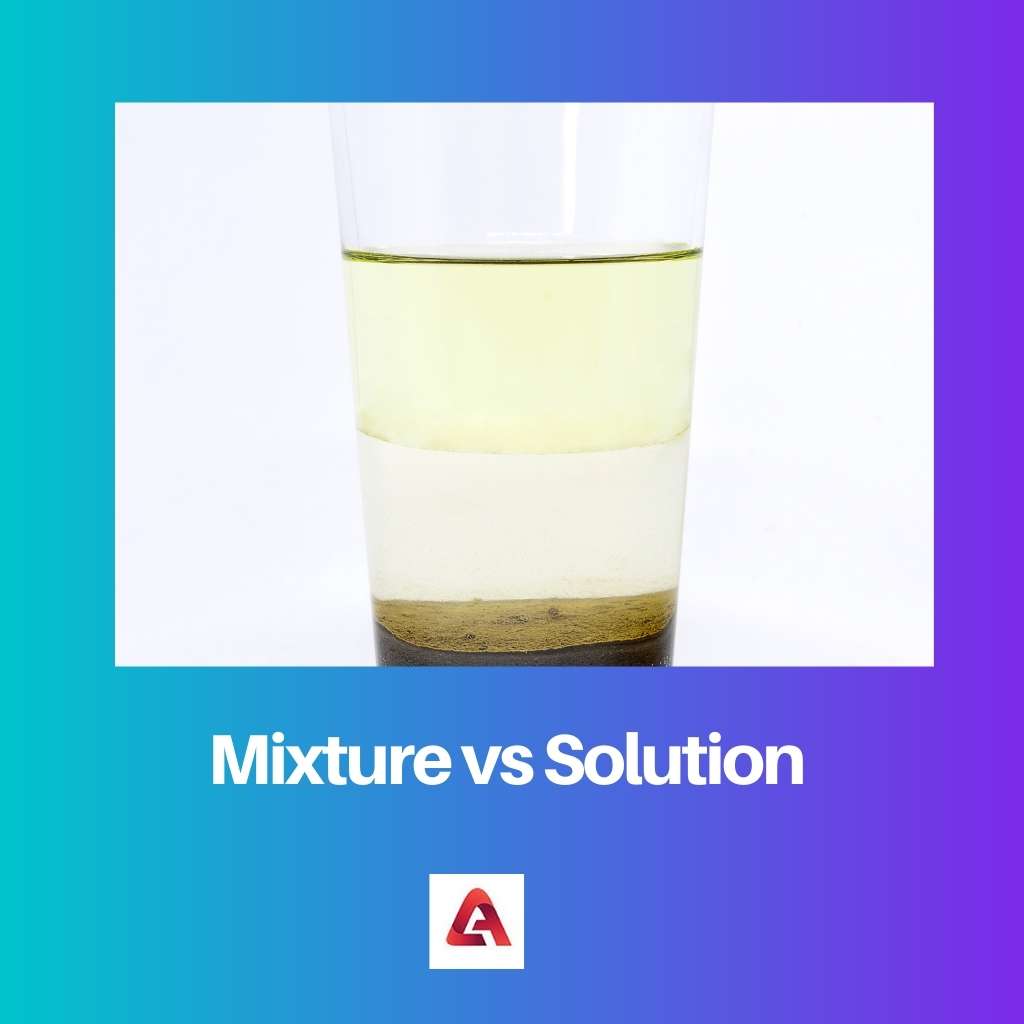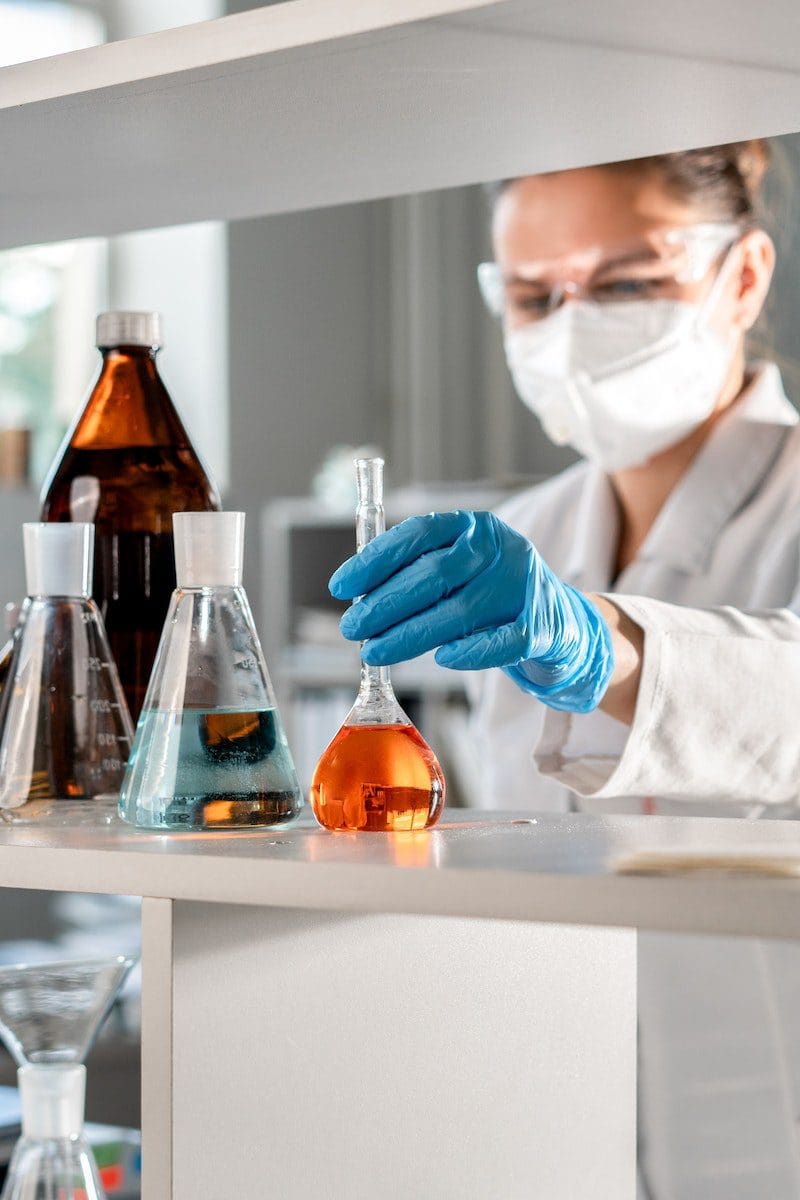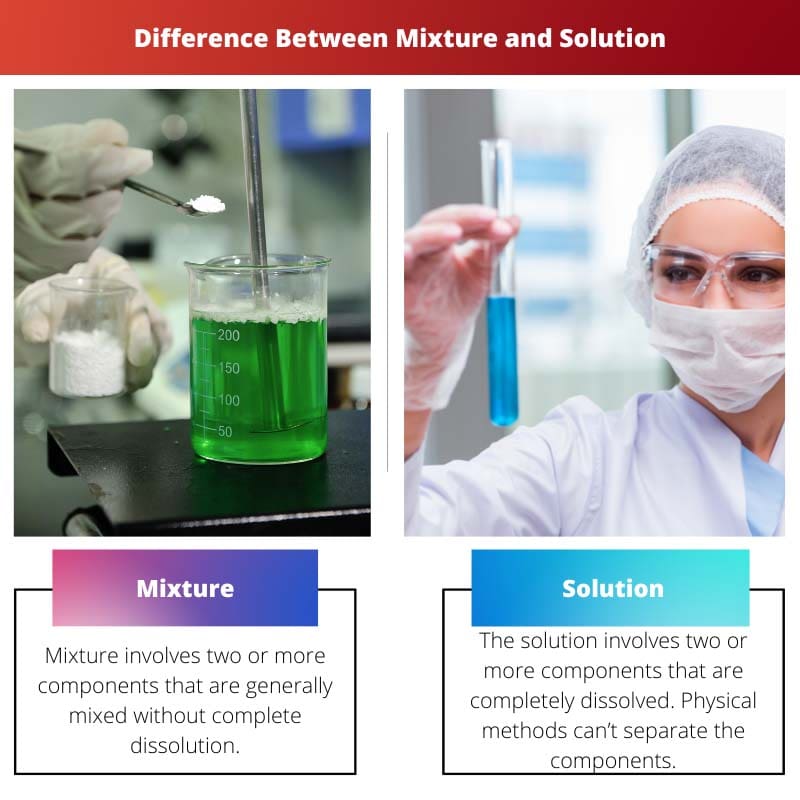The matter is composed of two substances, namely pure and impure substances. Pure substances refer to those substances that can be classified into compounds and elements.
Impure substances refer to those substances which can’t be easily categorized. Mixtures fall into the category of contaminated substances.
However, mixtures vary greatly from solutions.
Key Takeaways
- A mixture consists of two or more substances physically combined without any chemical reaction, while a solution forms when a solute dissolves in a solvent.
- Mixtures can be separated through physical processes like filtration or sedimentation, whereas solutions require techniques like evaporation or chromatography.
- Solutions exhibit homogeneity, with their components uniformly distributed; mixtures can be either homogeneous or heterogeneous.
Mixture vs Solution
Mixture is a combination of two or more substances that are physically combined, but not chemically bonded. A solution is a homogeneous mixture where one substance (the solute) is uniformly dissolved in another substance (the solvent). Solutions are transparent.

Mechanical mixing of two or more substances or forms of matter leads to the formation of a mixture. We can also separate the reactant substances of the product mixture with the help of physical methods.
No energy or enthalpy change takes place when a mixture is formed. Moreover, every state of matter can be combined, leading to the formation of a mixture.
The solution is a homogeneous mixture including its two components, solute, and solvent. The particle size of each component must be less than 1 nm.
The phase of the existence of a solution is not definite. The two components of the solution may be classified as solute and solvent; examples of solutions include air, which involves many gases in a homogeneous mixture.
Comparison Table
| Parameters of Comparison | Mixture | Solution |
|---|---|---|
| Definition | Mixture involves two or more components that are mixed without complete dissolution. | The solution involves two or more components that are completely dissolved. Physical methods can’t separate the components. |
| Particle Size | The particle size in the mixture ranges from 0.01-1000nm. | The particle size in the solution ranges from 0.01-1nm. |
| Chemical Bonds | No chemical bonding takes place between the reacting substances. | Actual chemical bonding takes place between the reacting substances. |
| Chemical Properties | The chemical properties of the reacting substances don’t lose their individuality. | The chemical properties of the solution vary from its constituents. |
| Nature | A mixture can either be heterogeneous or homogeneous. | A solution is always homogeneous. |
What is Mixture?
Material is derived from combining two or more substances without indulging in any chemical reaction. As no chemical bonding occurs between the initial reactant substances, the product mixture formed preserves the individuality of both substances.
The mixture reflects properties that are very different from its constituent elements. For instance, the mixture of water and alcohol has to melt, and boiling points varies significantly from both the components, i.e., water and alcohol.
In addition to the individuality of the components, the ratio in which the substances are mixed is also available. Some daily life examples of mixtures include crude oil, a mixture of many hydrocarbons or organic compounds, seawater, which contains water and salt.
Air is also a mixture as it has various gases in a fixed proportion. Mixtures can be classified into 2 types, i.e., heterogeneous and homogeneous mixture.
The properties and composition of substances mixed in the heterogeneous mixture are different. This implies that in various parts of the mixture, the composition and properties are different.
Some examples of these include water and air. In a homogeneous mixture, all the mixture parts have uniformity in composition and properties.
Some examples of these include a mixture of sugar along water.

What is Solution?
A homogeneous mixture involving the combination of two or more two components is called a solution. The solvent sets the atmosphere for dissolving of solute, which further dissolves into it.
For instance, in a solution containing 30% water mixed with 70% ethanol, ethanol acts like the solvent with water serving the solute. Similarly, in the saltwater solution, the table salt acts like the solute while water serves as the solvent.
Solutions are again classified into 9 types. The solid-solid solution, such as alloys, is the solution formed by solid solute and a solid solvent component.
The solid-liquid solution, such as sugar in water, is formed by solid solute and liquid solvent components. The solid-gas solution, such as the sublimation of camphor, is the solution formed by solid solute and gas solvent components.
The liquid-solid solution, such as hydrated salts, is the solution formed by a liquid solute and a solid solvent component.
The liquid-liquid solution, such as benzene and toluene, is formed by liquid solute and a liquid solvent component. The liquid-gas solution, such as aerosol, is formed by liquid solute and gas solvent components.
The gas-solid solution, such as hydrogen and palladium, is the solution formed by a gas solute and a solid solvent component. The gas-liquid solution, such as aerated drinks, is formed by gas solute and liquid solvent components.
The gas-gas solution, such as a mixture of various gases, is formed by gas solute and gas solvent components.

Main Differences Between Mixture and Solution
- There is no fixed ratio in which the reacting constituents are mixed. On the other hand, there’s a fixed ratio in which the components are mixed.
- Some examples of mixtures include sand and water, salad, oil, water, etc. On the contrary, some examples of solutions include hot chocolate, salt, water, etc.
- Mixtures never lead to the formation of any new compound. But, when interacting chemically, solutions lead to the formation of a new substance/compound.
- Mixtures have particles with their sizes ranging between 0.01-1000nm. On the other hand, solutions have particles with their sizes ranging between 0.01-1nm.
- The components of a mixture don’t lose their individual chemical properties in a mixture. However, the components of a mixture lose their individual chemical properties in a solution.





